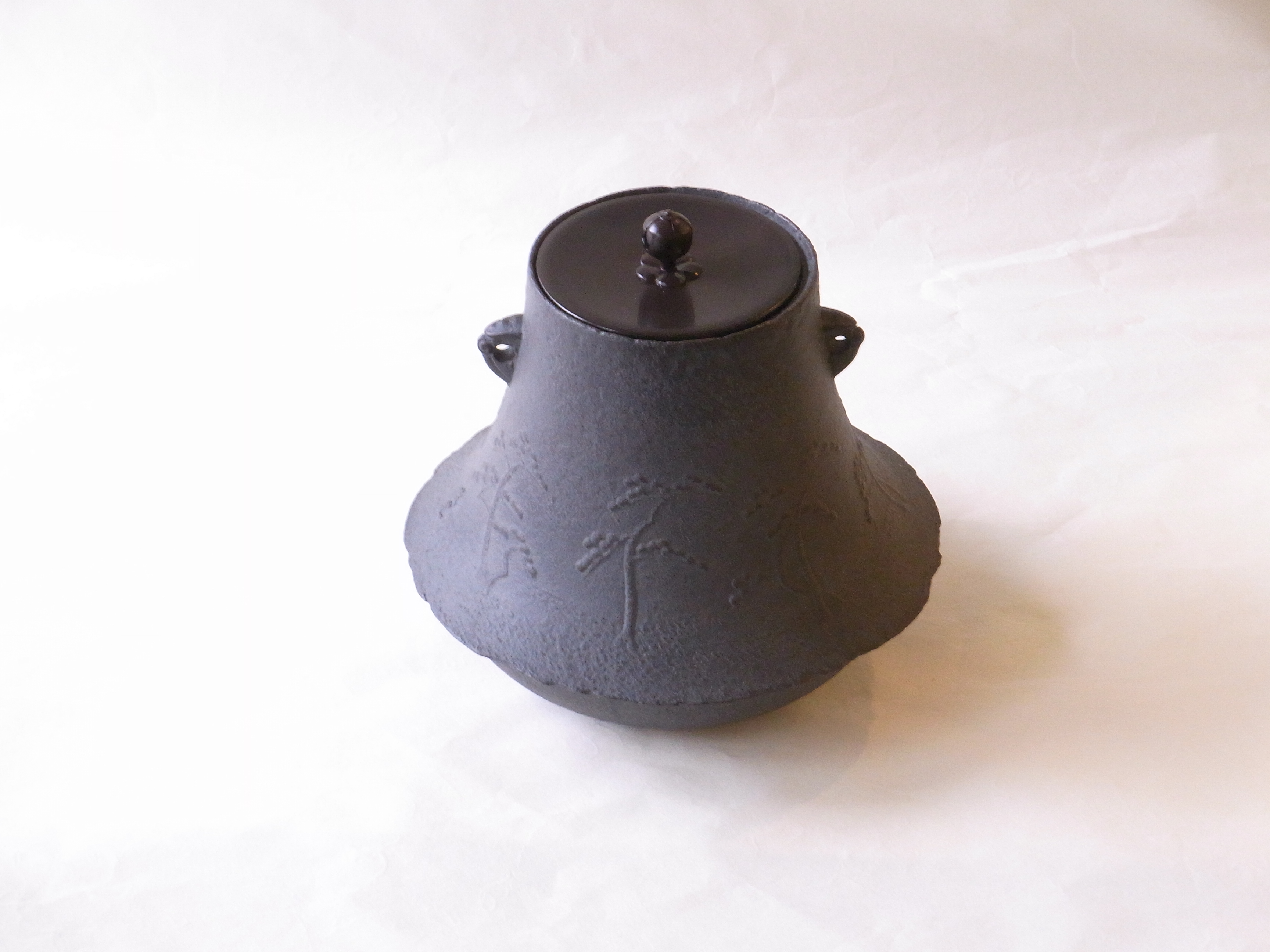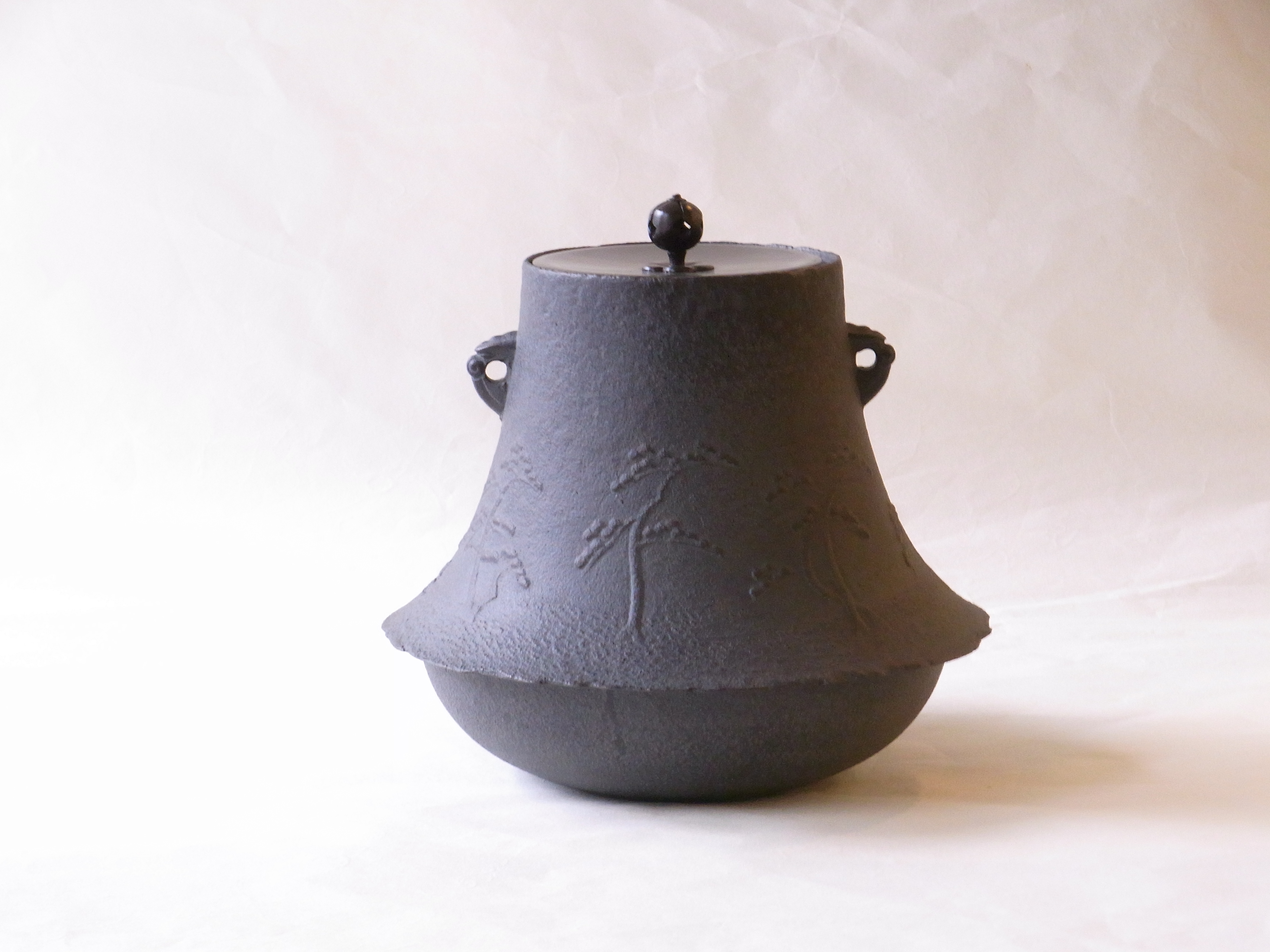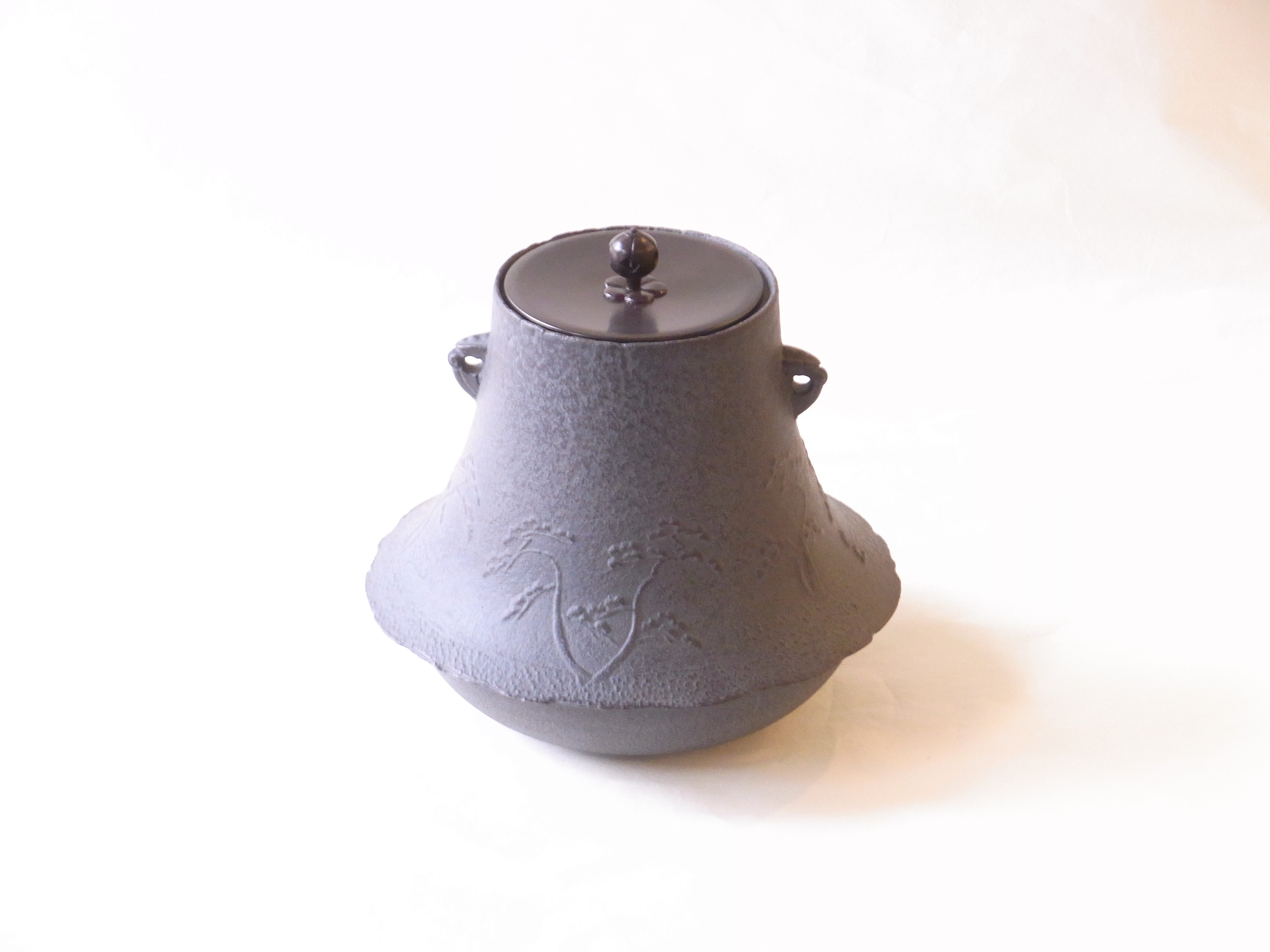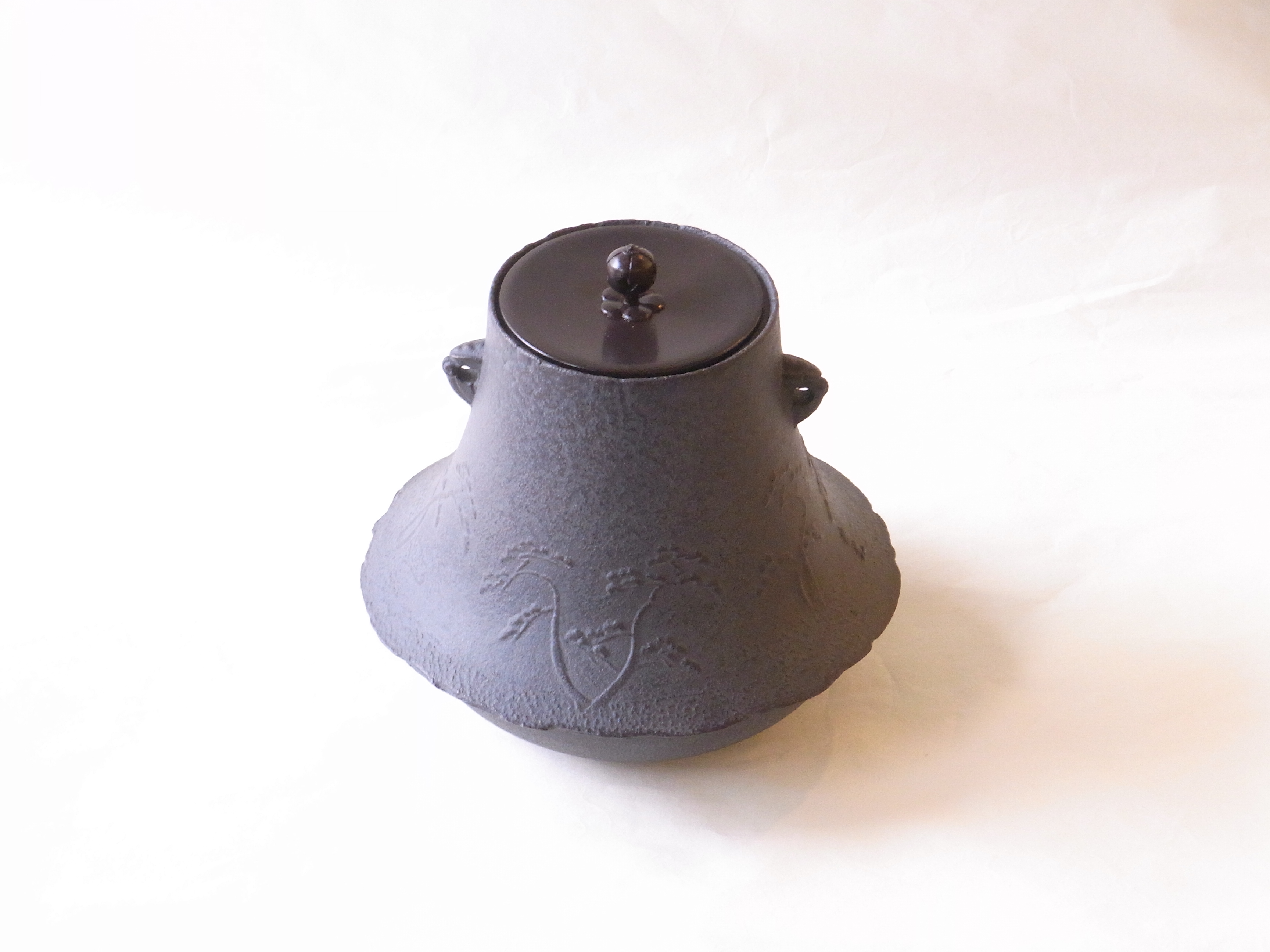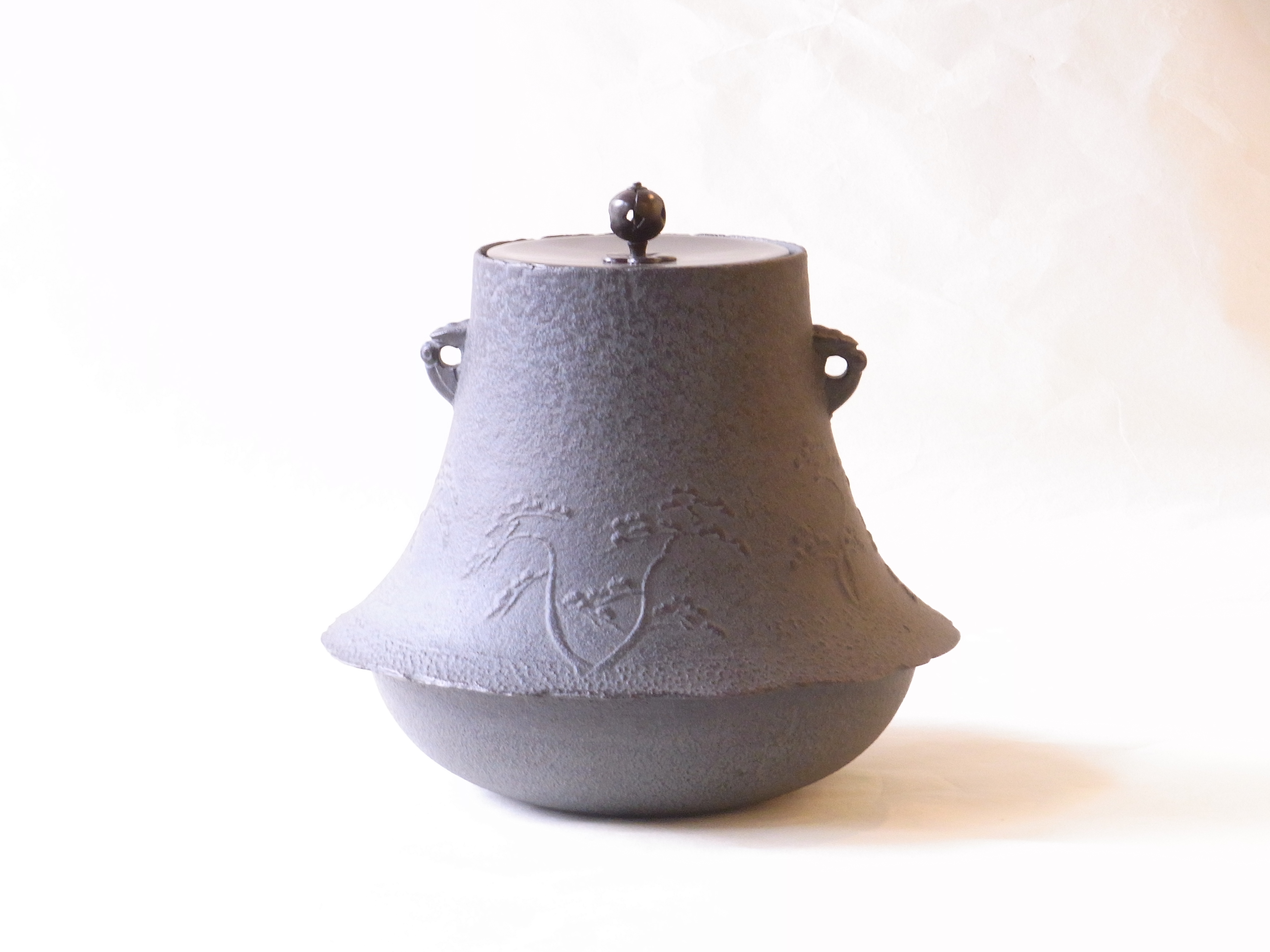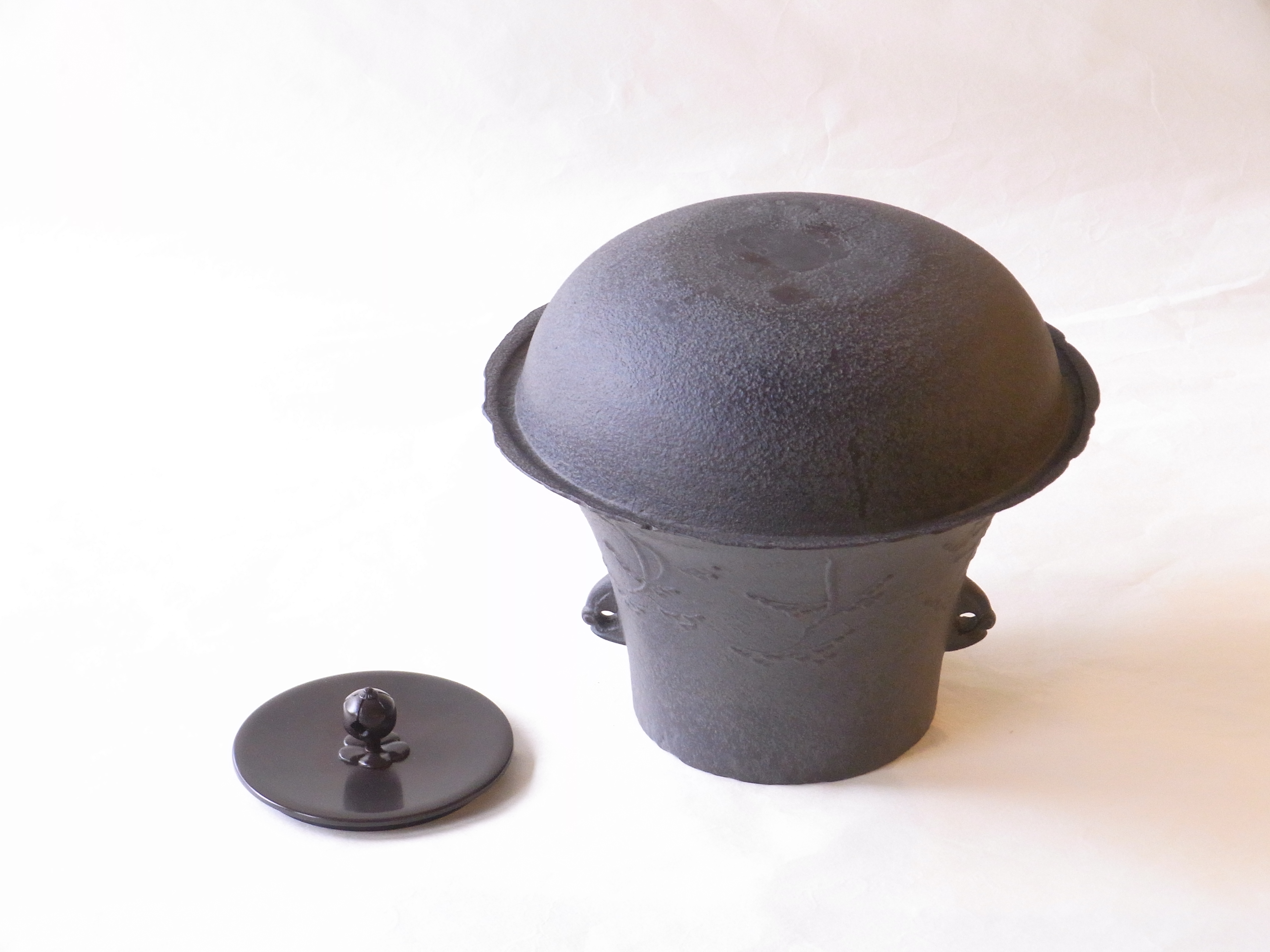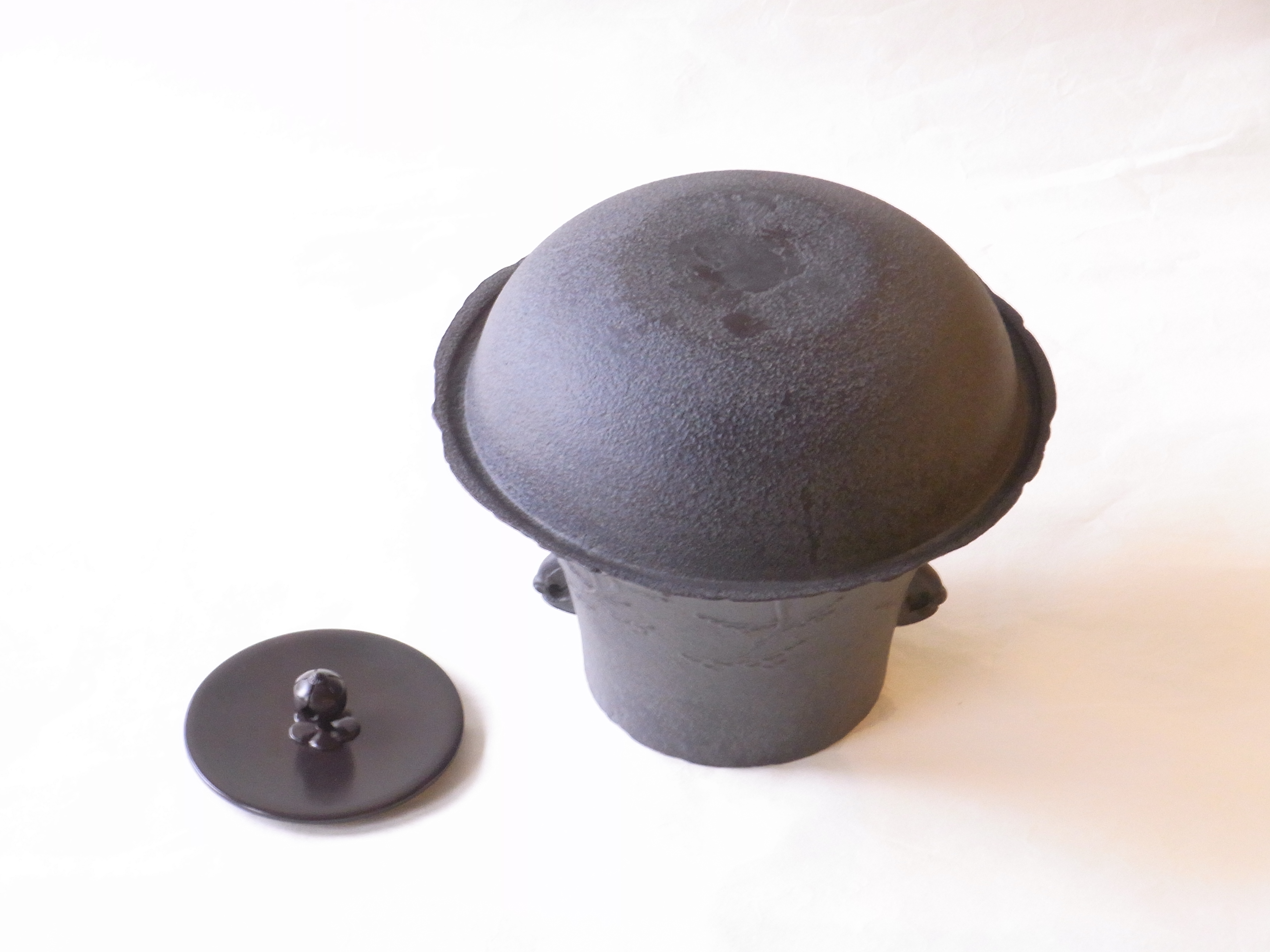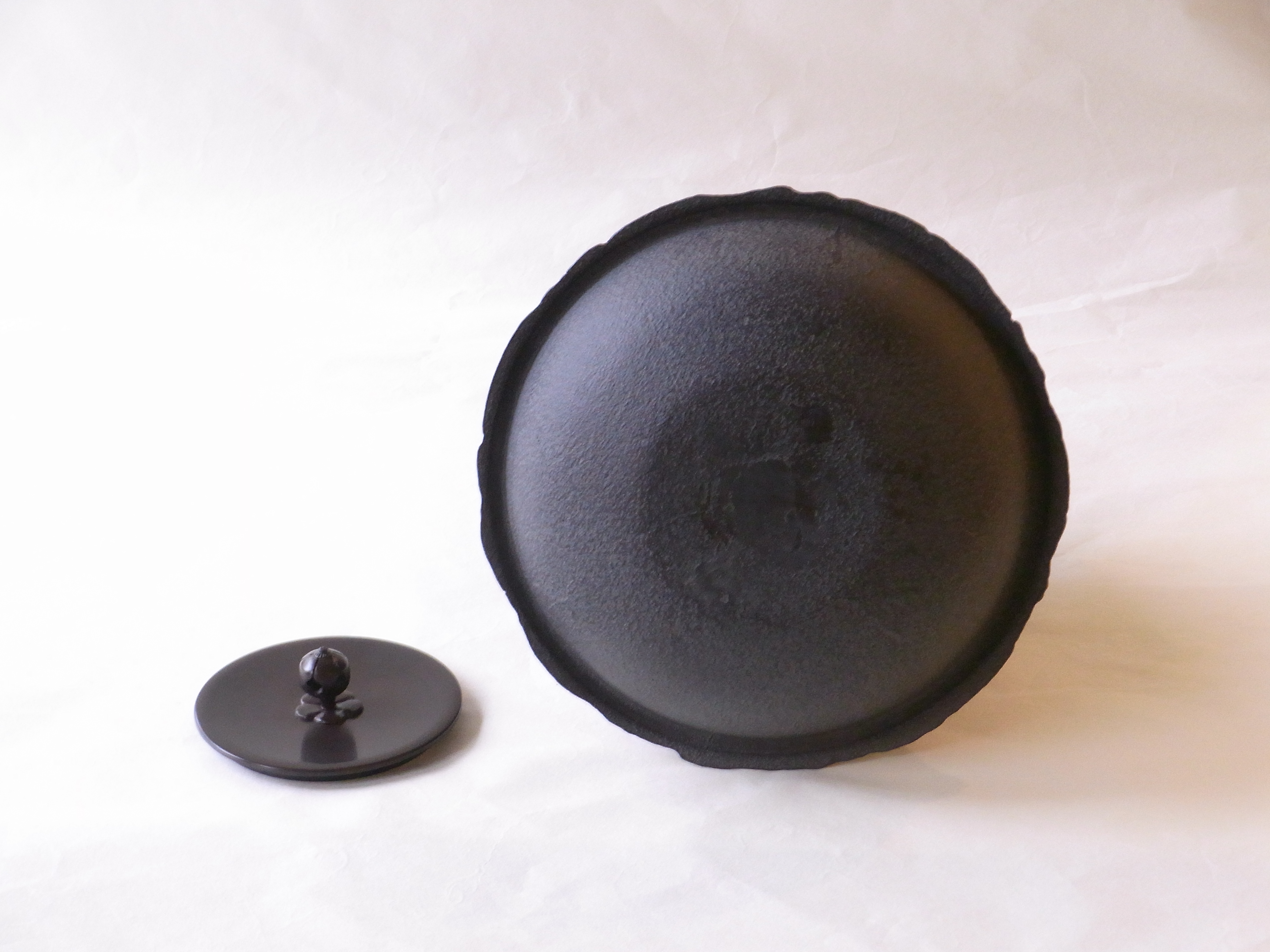It is an introduction of the tea pot for Japanese-made and wind furnaces used in the tea ceremony.
Because the diameter is small and the hem spreads out and its shape is on Mt. Fuji
This name is attached.
On the surface of the pot, there is a scene called “Hamamatsu Jimon”, in which numerous pine trees are planted on the sandy beach.
It appears.
It seems that there is a record that this Fujima had already been used around 1550.
In the production area of the pot, it seems that there was a period when this pot was actively built.
There seems to be various forms in Fuji pot, but this Fuji pot is well-balanced
It has a well-balanced and well-shaped overall.
The hem is jagged and impressive, like a pot with wings.
The inside is rust-proofed, and the inside bottom has “sounds”.
In addition, a pair of chopsticks is attached from the beginning.
它是茶道中使用的日本製造和風爐的茶壺的介紹。
因為直徑很小,下擺展開,形狀在富士山上
這個名字是附上的。
在鍋的表面,有一個名為“Hamamatsu Jimon”的場景,在沙灘上種植了許多松樹。
看來。
似乎有記錄顯示這個Fujima已經在1550年左右使用過了。
在鍋的生產區域,似乎有一段時間這個鍋是積極建造的。
富士鍋似乎有各種各樣的形式,但這個富士鍋很平衡
它具有良好的平衡和良好的整體形狀。
下擺呈鋸齒狀,令人印象深刻,就像一個帶翅膀的鍋。
內部防銹,內部底部有“聲音”。
另外,從一開始就裝上一雙筷子。
这是茶道中使用的日本制造的风炉的茶壶的介绍。
因为直径很小,下摆展开,形状在富士山上
这个名字是附上的。
在锅的表面,有一个名为“Hamamatsu Jimon”的场景,在沙滩上种植了许多松树。
看来。
似乎有记录显示这个Fujima已经在1550年左右使用过了。
在锅的生产区域,似乎有一段时间这个锅是积极建造的。
富士锅似乎有各种各样的形式,但这个富士锅很平衡
它具有良好的平衡和良好的整体形状。
下摆呈锯齿状,令人印象深刻,就像一个带翅膀的锅。
内部防锈,内部底部有“声音”。
另外,从一开始就装上一双筷子。

